Java has become one of the leading programming languages that power much of today’s digital world. The language has progressed and stood the test of time to build the foundation of web development. From web services to applications, Java’s influence has been unanimous. And to bring this technology to life, full-stack Java developers have been in demand for just as long.
The reliance on Java is understandable too. The language is fast, secure, and reliable. It has the versatility to power a whole host of technologies and is seen in everything from console video games to laptop and mobile application development.
Today, we’ll be discussing everything you need to know to begin your journey as a full-stack Java developer and all the skills you’ll require along the way. By the end of this article, you will be well-versed in the importance of the job and how you can begin your career as a capable Java software engineer.
What Is A Full-Stack Java Developer?
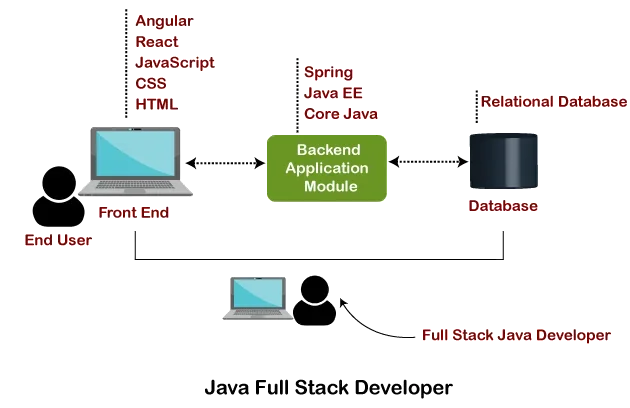
For people new to web applications and software development, this section may seem as if it is answered earlier in the post already. But we assure you, understanding the role is much more complicated than that.
For instance, to understand what a full-stack Java developer is, it is important to learn what the term “full-stack” even refers to first.
A full-stack developer has the knowledge base and technical expertise to handle all client-side (front) and server-side (back) aspects of development.
The term “front-end development” refers to all aspects of development that are on the end-users side. It includes:
- Layout
- Core functionality
- Design of the web app or website
- All the graphics, menus, pages, and links that go into development
The term “back-end development” refers to the development of the server that handles user requests in a database. For instance, the back end of a shopping website would ensure all items added to the cart are verified by the inventory and prepare the next steps for checkout.
A full-stack developer handles both elements of the development job and does not typically have a preference for the type of development they prefer executing. Insert Java into the mix and you’re looking for a person that has an excellent command of the front-end and back-end development landscape of software or web service development.
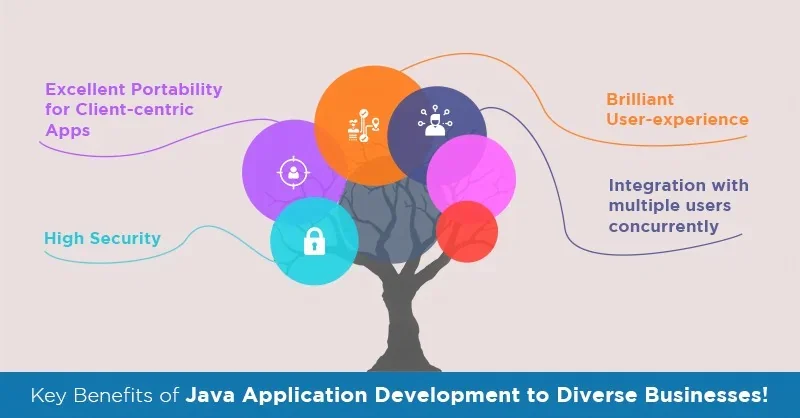
But why is Java such a popular full-stack language? Java’s notable reputation comes down to a few elements:
A. Versatility
Java is the de facto language for developing Android applications, web apps, websites, and other software development tools. It has a long and rich history of working on multiple projects.
B. User-Friendly
Java is one of the first languages that new programmers and web developers learn to further their careers and begin developing. It has English-like grammar making it easy to grasp.
C. Documentation
Java is open-source, which means it is completely free to learn and use. It has a robust and active development space filled with guides and tutorials to help debug common issues.
D. API Integration
Java has around 50 keywords but the API (Application Programming Interface) is robust, comprehensive, and wide. These can be used for any code and in any situation.
E. Development Tools
The IDE (Integrated Development Environment) is full of Java. The Java IDE is a collection of automation tools, editors, and debuggers.
Java vs JavaScript
Most development novices may conclude that Java and JavaScript are the same languages but besides sharing parts of a name, the two are very different from one another. The biggest difference between the two is that Java is a compiled language whereas JavaScript is an interpreted language.
The former is written and run through a compiler to create a bytecode. This bytecode is then run in a JVM (Java Virtual Machine). The latter doesn’t require compilation and is interpreted as the script runs.
Besides the technical differences, Java is used to create desktop applications, games, servers, and for website back-end development. JavaScript is primarily used in the front-end development of a website or web application.
What Does A Full-Stack Developer Do?
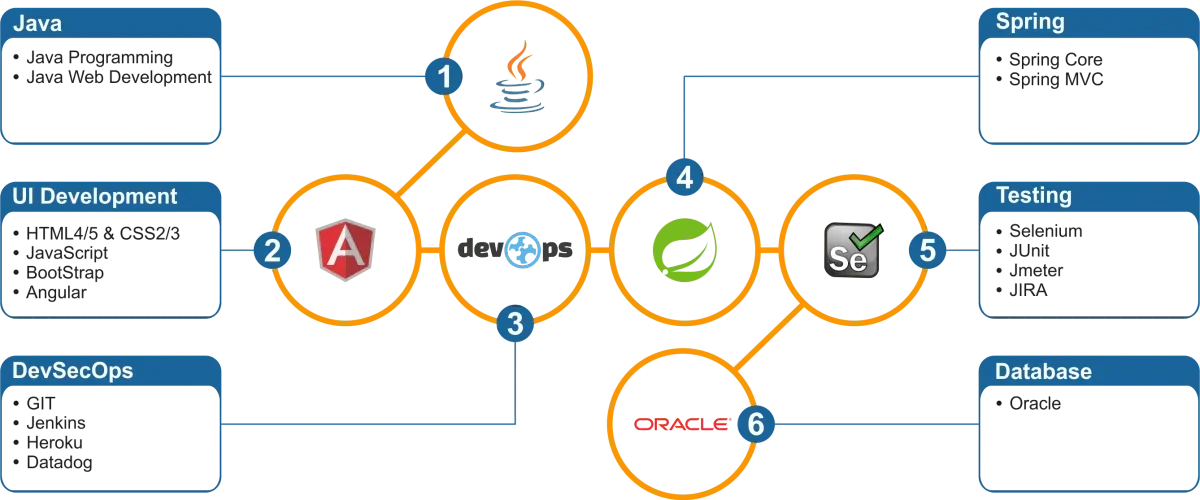
A Java full-stack developer has skills in a wide variety of coding niches and typically works on the front-end and back-end of an application or program. They have experience with databases and even designing skills to ensure that a great user experience is maintained.
Full-stack development deals with all aspects of the application’s lifecycle and programmers in this field have a few key responsibilities entrusted to them. Here are a few notable ones:
I. Helping Design And Create Software
The first step in any application’s development is the design and wireframing process. This process helps identify the initial layout of the application and where everything will go once designers begin their work.
Application design isn’t just limited to layouts and visual architecture either. Full-stack Java developers ensure that the overall user interface (UI) and user experience (UX) work in conjunction for smooth operability. If an application is too complex to understand by first-time users, full-stack developers pinpoint the exact causes for it and aim to simplify it for better use.
Design principles are followed as well to ensure all elements, content, and visuals are placed in their ideal locations. Application navigability is also the utmost priority.
II. Programming The Front And Back-Ends
With the initial design out of the way, full-stack Java developers can turn their attention to realizing their plans and turning layouts into functional apps. It includes programming everything on the front end and back end.
Front-end development deals with UI functionality where animations, transitions, buttons, and sliders are functional. This process is an important step in the overall operability of the software since most users will interact with the front end. Think of it as programming the “refresh page” to highlight and change colors on your browser when you hover and click on it with your cursor.
Back-end development deals with server-side programming which is usually more complex and ties all front-side animations to do the job that is intended for them. Going by the same example used above, back-end development ensures that once you’ve clicked on the refreshed button, data is sent to the server, which fetches information from the database about the webpage on the browser and reloads it.
III. Testing And Debugging
The final requirement expected of full-stack Java developers is to be the first line of defense against all bugs and errors that may occur in their code. Writing 100% accurate code for any language is an impossible task and Java isn’t immune to this issue either.
Developers need to painstakingly examine their libraries and code for any flaws that may show during or after programming. Features may not work as programmed, information may not be displayed as intended, and the entire compilation could crash too. Finding the source of the issue and fixing it in time is the priority.
Functional code is a requirement by most development companies and full-stack Java developers are expected to deliver on this front. Most use JUnit 5, a unit testing framework, to help with this task.
Full-stack developers at Aloa are well-versed in all three departments and have excellent knowledge of the language’s deployment and use. Our company finds the best talent through our meticulous vetting process and only provides developers to companies that excel in the previously-mentioned categories.
Looking to join Aloa as a full-stack Java Developer? Let's look at some of the skills you would need to get started with us.
5 Skills You Need To Master To Become A Full-Stack Java Developer
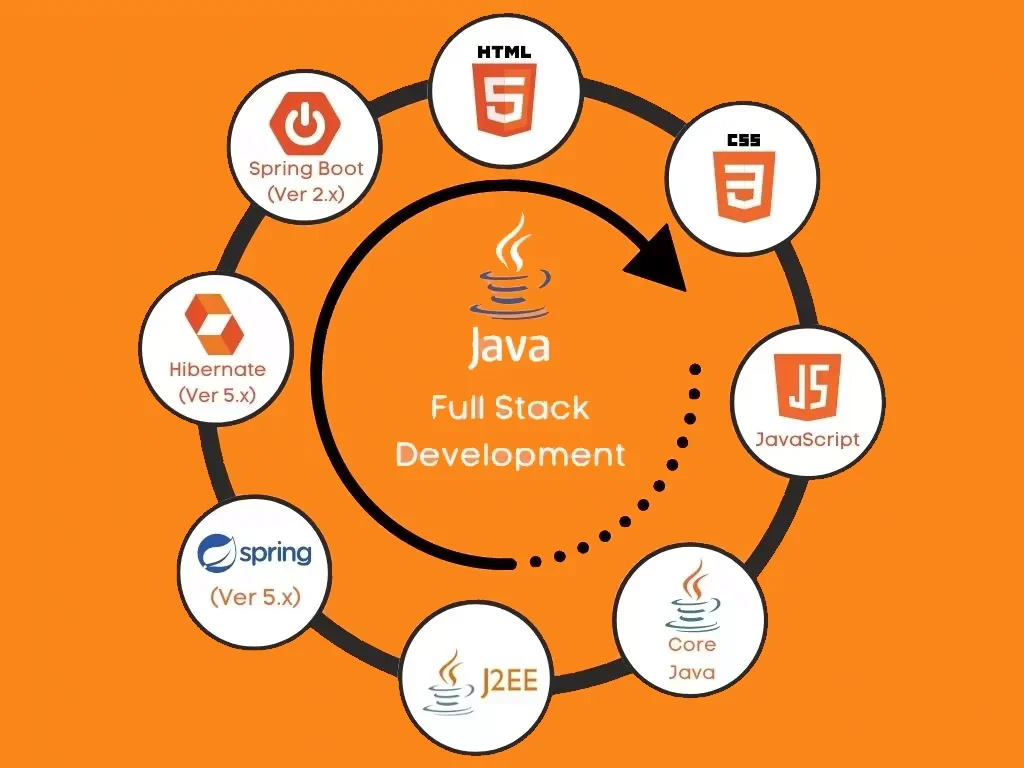
Once you’re aware of all the responsibilities of a Java developer, it is time to start creating a checklist of all the prerequisites you need to become one. Since software development is a vast industry with multiple skills that can ultimately help you advance your career, there is no shortage of tools and abilities you need to master to become successful.
These five skills, however, are an excellent way to introduce yourself to the field and begin working as a Java developer today.
1. Front-End Languages And Frameworks
Front-end development isn’t possible without knowing your way around a handful of programming languages that turn a simple design into functional digital “equipment”. The most popular front-end languages today are:
1.1. HTML
Hypertext Markup Language or HTML is the foundational language used in front-end development. Developers use HTML to create the baseline appearance of all content (text and images) that go on the app. It creates a format for the initial placement of visual elements.
1.2. CSS
Cascading Style Sheets or CSS takes all the data from HTML and adds visual enhancements and stylistic elements to them. CSS governs aspects of on-page content such as font, size, color, and spacing. The language is used to make the app look more decorative.
1.3. JavaScript
JavaScript is used to add other functional qualities to the page or app. It is a powerful language that can enhance user interactions with the application. Mastering any one of the many JavaScript libraries such as ReactJS, Vue, JQuery, and Angular is essential.
2. Back-End Languages And Frameworks
Java programming is only halfway done once you complete the front-end side of the development. Understanding how the server-side works and knowing how to program it is the other half.
Additionally, learning how to create microservices is also important and tools like Spring Boot can help. You will need to learn how to use the following technologies and frameworks for back-end Java development:
2.1. JavaScript
It’s no surprise why JavaScript is used in client-side and server-side development considering its sheer prowess. But environments such as Node.js and Express.js are important to learn for all back-end programming requirements.
2.2. Java
Java was built to work on the server side. It is therefore pretty obvious for anyone looking to become a Java developer to have a good level of mastery over this development language. In addition, you should be comfortable using the Spring framework and Java Server faces.
2.3. C#
C# (pronounced, C Sharp) is one of the most powerful and well-rounded languages available today. It also boasts a reputation for being one of the most difficult to learn. Still, it is preferred when creating architecture for Windows environments.
2.4. Other Languages
Supplementing your career with other programming languages is also crucial. New languages such as Python are versatile and can handle all aspects of back-end development. The Django and Flask frameworks are particularly powerful tools to learn. Other languages such as JSP, PHP, Ruby, and Perl can also come in handy and look great on your resume too.
3. DMS (Database Management Systems)
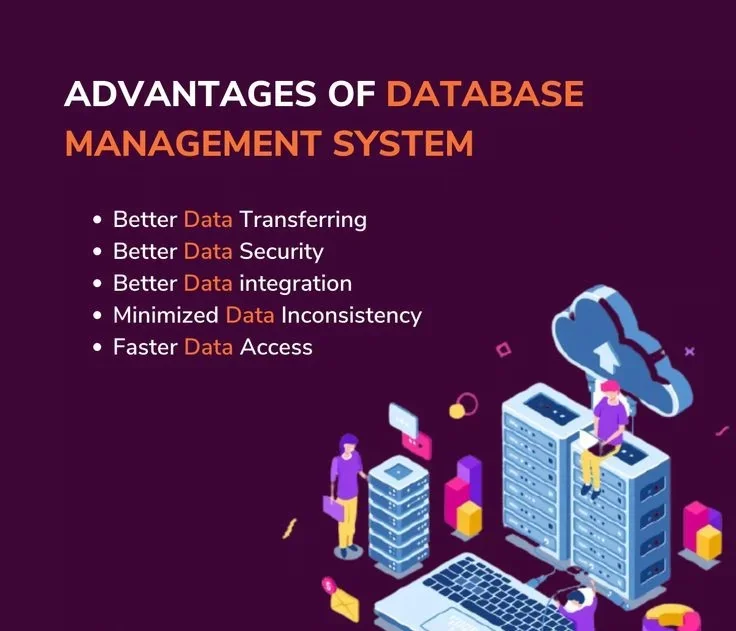
Most full-stack software developers know their way around data management systems, and if you’re looking to excel as one, learning how to operate them is non-negotiable.
Data management systems are software systems that store, retrieve, and run queries on data. These programs provide an interface between the user and the database. It allows users to create, update, read, and delete existing and incoming data in the database.
Popular database management systems are MySQL, SQL, PostgreSQL, MongoDB, and Oracle. Understanding how they work and interact with databases through frameworks like Hibernate and creating queries using JDBC and JPA is essential for a full-stack Java developer.
4. Web Hosting And Version Control
Web hosting platforms let you deploy your application or software to the CSP (Cloud Service Provider) so it can be accessed using browsers or internet protocols. Some of the popular web hosting platforms are AWS (Amazon Web Services), Google Cloud Platform, and Microsoft Azure.
Alongside web hosting, full-stack Java developers are also required to use Servlets APIs and Version Control systems. VCs like Git and GitHub help manage project files. Uploading your codebase to these platforms can enable users to view and identify errors and suggest changes to make your application or software more efficient.
5. Soft Skills
Every professional requires soft skills to help showcase their technology-based skills and be effective members of a team. These are virtually limitless but the main ones to focus on are:
5.1. Analytical Skills
Being able to identify and comprehend information is vital for a full-stack developer. This skill can help them maximize efficiency by making logical and data-driven decisions.
5.2. Problem-Solving Skills
All developers are problem solvers but not all problem solvers are developers. There will be challenges and moments where your code won’t work. Finding the right approach to remove any dependency and finding the most appropriate solution is the key.
5.3. Time-Management Skills
Deadlines are the bane of everyone’s existence but if you have a high-priority project that has a three-month deadline, time is of the essence. Working in Agile can also help keep you on track.
5.4. Planning And Creativity
Most companies simply don’t hire software developers if they don’t demonstrate creative skills and aren’t great planners. Lead the pack by thinking outside the box and being meticulous.
How To Become A Full-Stack Java Developer
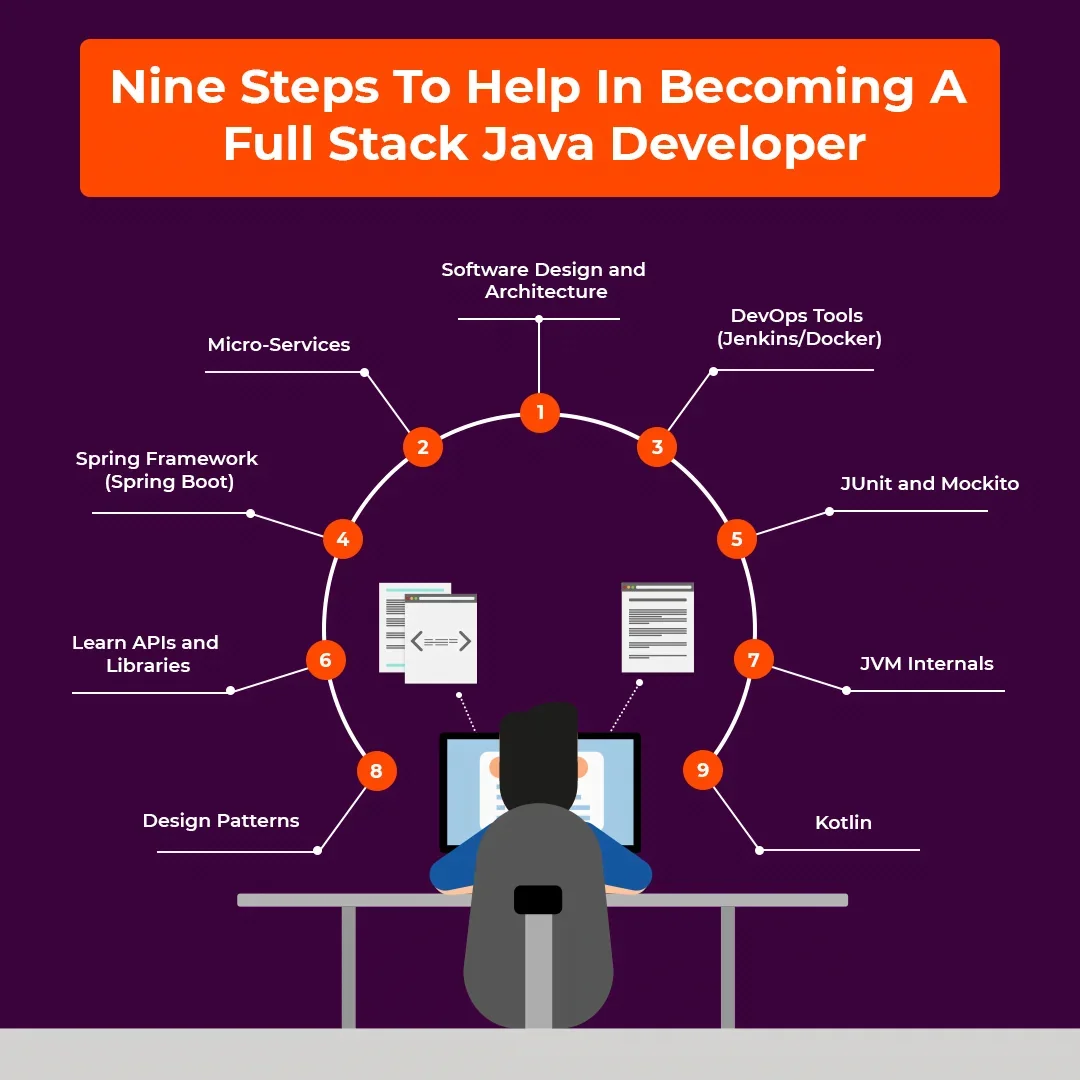
Even if you have all the hard and soft skills needed for the job, you can struggle to try to make your mark in the industry. With our best practices, you can set off on your career as a full-stack Java developer.
Step 1: Learn The Basics Of Java
As we’ve seen earlier in the article, becoming a Java developer requires a certain set of skills you must possess to be qualified for the developer job. Start with Core Java and learn the languages and frameworks associated with the technology and practice them until you have an intermediate to expert level of understanding of how things work.
Step 2: Enroll In A Computer Science Program
Certificates, crash courses, and obtaining a bachelor’s degree are all viable methods of getting a relevant qualification as a beginner. Computer Science programs are offered all over the world and can be as short as a few months to a few years. But this program will help you learn the fundamentals of coding and programming and understand how the programming architecture works.
You can leverage plenty of online courses and practice exams, like Schoology, Microsoft PL-300 Dumps, or ExamJet, to get yourself into test-ready shape.
Another easy and convenient way to learn to code is through video tutorials. In fact, some experts consider YouTube the best free learning platform for Java coding. It is an excellent place to start and will teach you the fundamental concepts and tools of Java.
Once you complete those tutorials, you can practice through online exam prep from various providers. Sites like Skillsoftand Trackin offer wonderful and comprehensive solutions.
Step 3: Seek Internships
Internships and apprenticeships are the first logical step for most developers seeking professional experience since software development firms are reluctant to hire fresh talent. Aloa employs a global pool of resources in its development team. If you are a quick learner and have the necessary skills to become a full-stack Java developer, try an apprenticeship with Aloa.
Step 4: Gain Industry Experience
Work your way up the corporate ladder and once you’re up a few rungs, seek entry and intermediate-level developer positions. Associating with industry leaders like Aloa will give you an opportunity to get hands-on experience working on the most challenging projects and provide you with the necessary exposure to become a top-notch full-stack web developer.
Step 5: Update Your Resume
Update your resume highlighting all the skills, frameworks, methodologies, and languages you’re proficient in. As you apply for mid to senior-level roles, choose resume templates that best represents your experience and achievements. Develop the routine of updating your resume quarterly and include everything that you’ve achieved during that time frame. It will help the recruiters assess your strengths and progress throughout the journey.
Conclusion
Beginning your journey as a full-stack Java developer can seem daunting and, frankly, frightening for most people. Given the magnitude of resources and technology that one has to familiarize themselves with, we don’t blame them either.
But the effort pays off especially if you work your way through Aloa’s meticulous vetting process and begin working on some of the biggest Java projects in the world. We have a robust team of some of the most skilled software engineers in the world and is the top professional environment to further your career as a Java developer.
Contact us at [email protected] or visit our website with any questions or concerns that you may have.

